Interleaved Frequencies maps (old ones)
 Brian Butterworth published on UK Free TV
Brian Butterworth published on UK Free TV These are the maps, supplied by Ofcom, showing the coverage areas for the "Interleaved Frequencies" than can be used for the Freeview Local TV service.
The green areas have good predicted coverage for the "Interleaved Frequencies", yellow is possible coverage.
Note: these areas are considerably different from the normal Freeview coverage for each transmitter.
Update: Ofcom introductory comments
The study considered frequency channels -5 below and +2 above the receive aerial
group for the station. Though for the 10 largest stations all channels were considered.
The ERP of main stations has been set at 10kW and relay stations at 1kW. It should
be noted that in several cases these powers result in a higher ERP than allocated to the
main multiplexes.
Coverage of the chosen channel has been assessed on the basis of the derived template
and the use of a 64QAM 2/3 modulation scheme. Availability of mast aperture, mast
loading and building space to support the required antennas and house transmitters
was not investigated.
Coverage calculations are based on existing broadcast stations and reception via fixed
roof top aerials.
The derived UK median templates are designed to protect populated coverage derived
by the median method. The derived UK continental templates include Irish and
Continental restrictions based on 23dB?V/m at the border.
The exercise has been based on version 5.51 of the UK digital plan and an
interpretation of the GE-06 frequency plan for Europe.
Coverage of each interleaved channel is quoted in isolation, i.e. only that channel and
the v5.5 plan have been considered.
As coverage is based on the template at the planned height and at the maximum ERP,
coverage using implemented antennas, heights and actual ERP will be lower.
Crystal Palace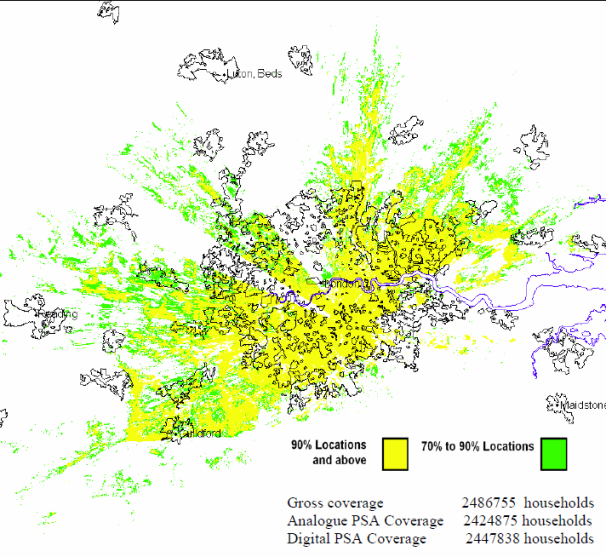
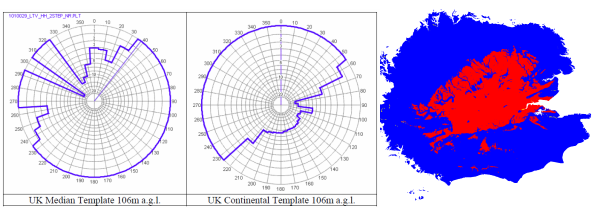
The Interleaved Map for the transmitter is created from three elements. The left circular image shows the UK post-switchover use of the same frequency, the central circular image is the Continental use of the same frequency. These are subtracted from the "normal" coverage area for the transmitter, the right hand image, to create the "Interleaved Frequency" coverage area.
Winter Hill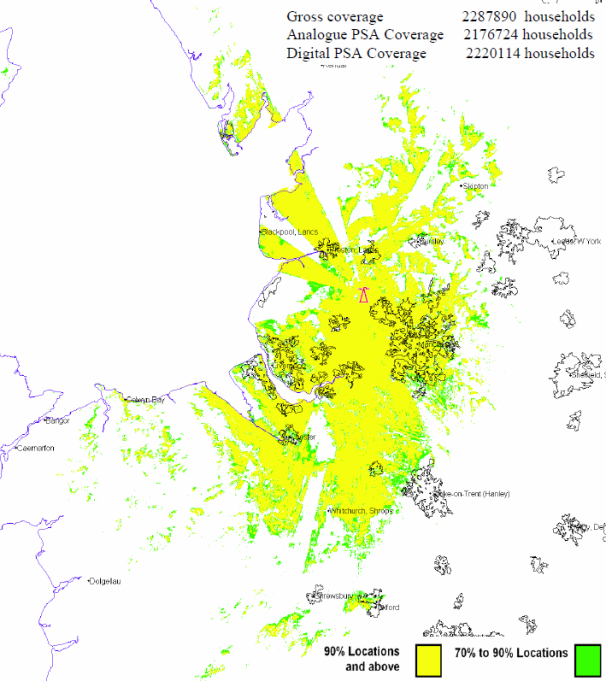
Black Hill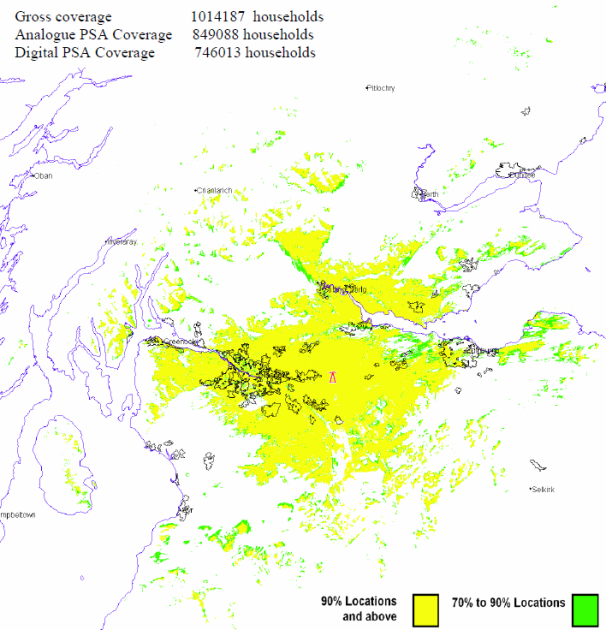
Sutton Coldfield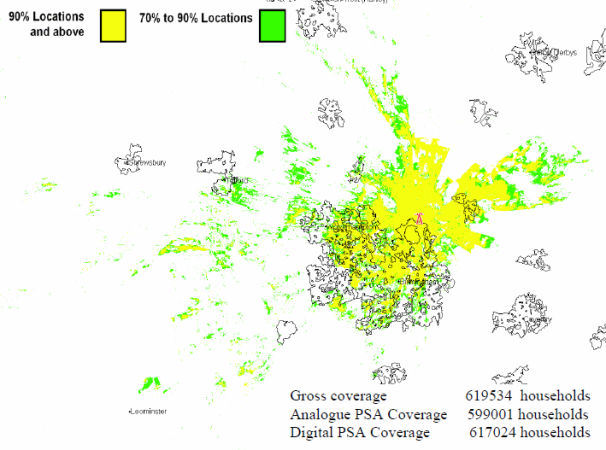
Pontop Pike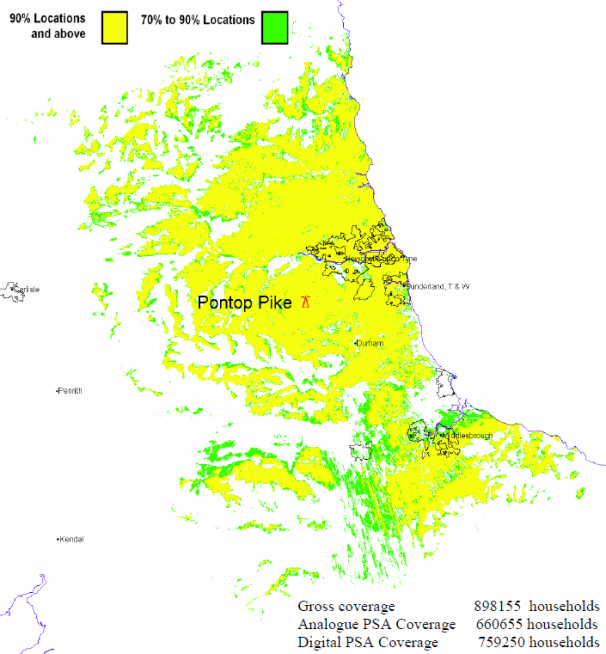
Emley Moor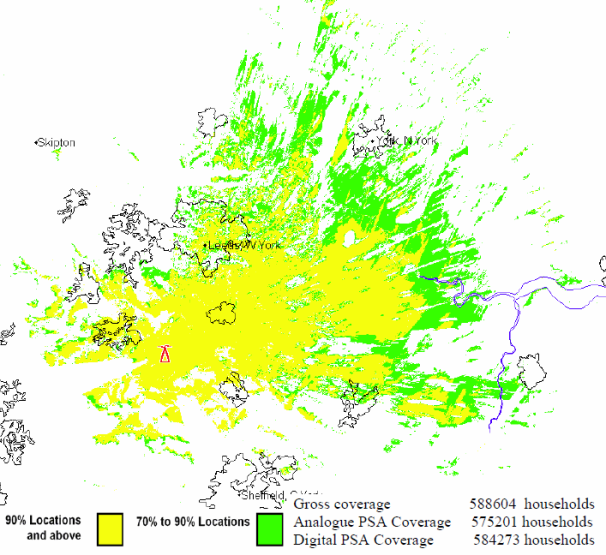
Bilsdale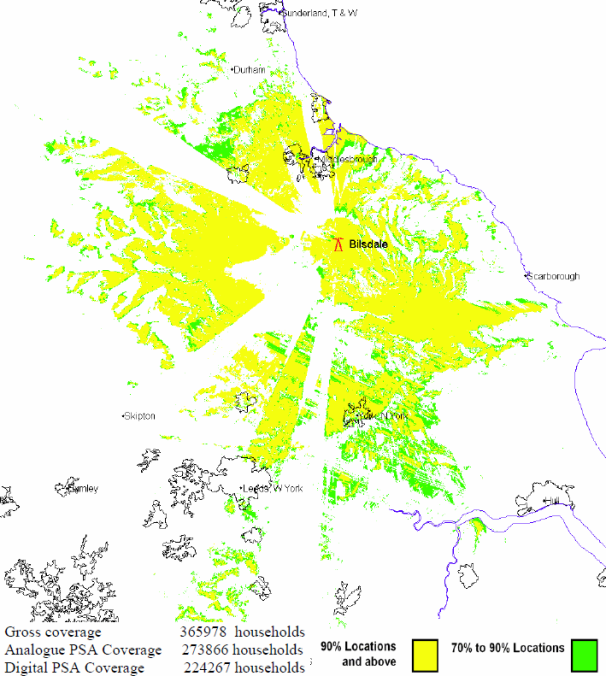
Rowridge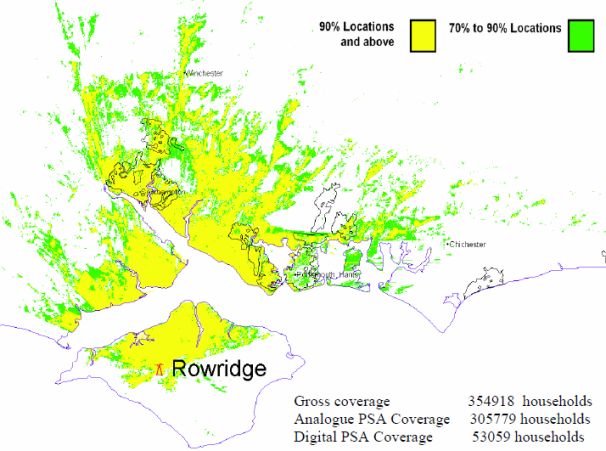
Waltham
Craigkelly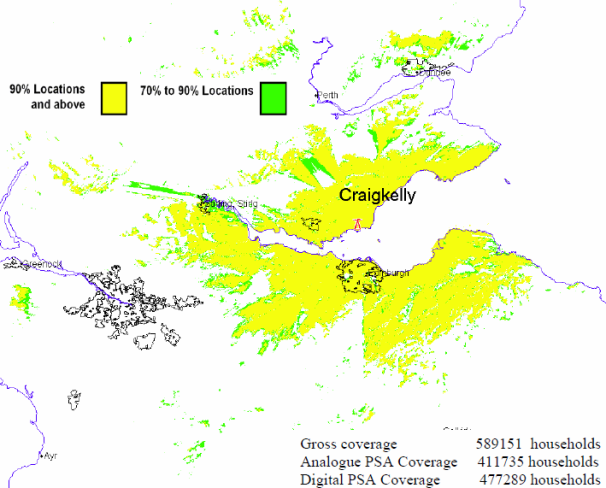
Wenvoe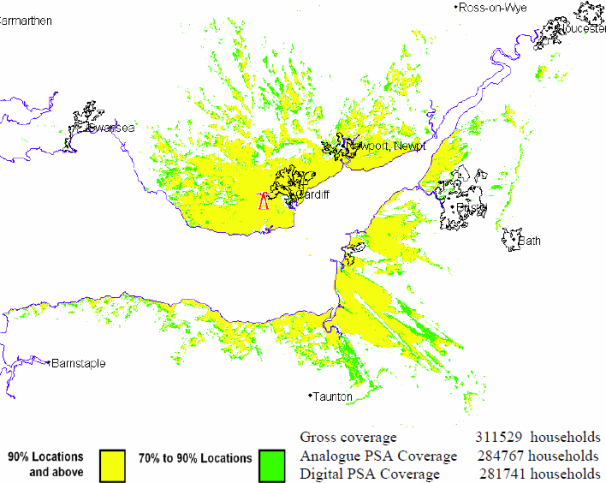
Belmont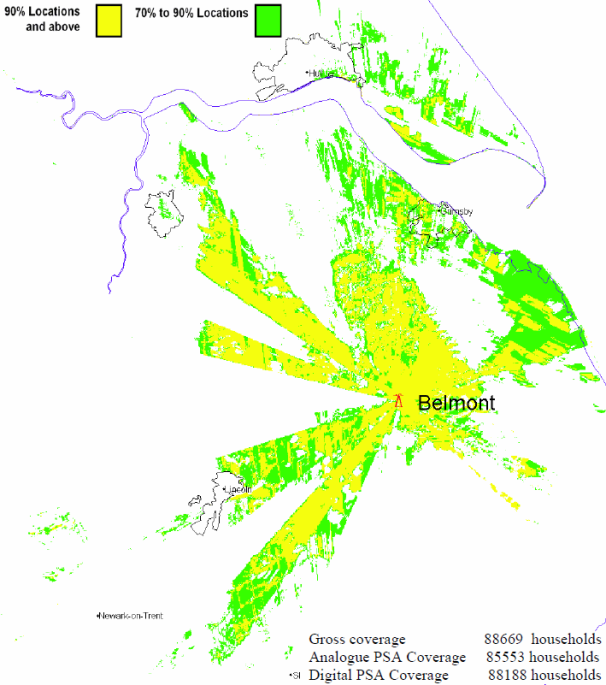
Hannington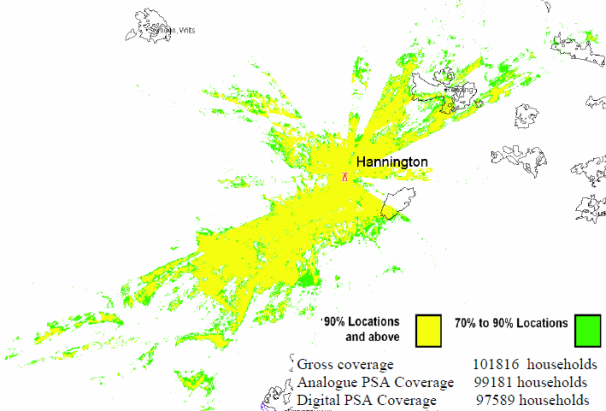
Divis
Tacolneston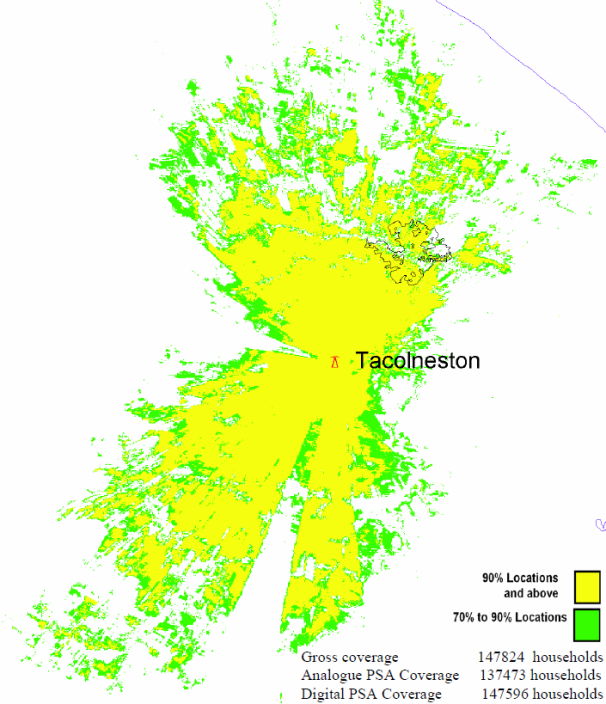
Sandy Heath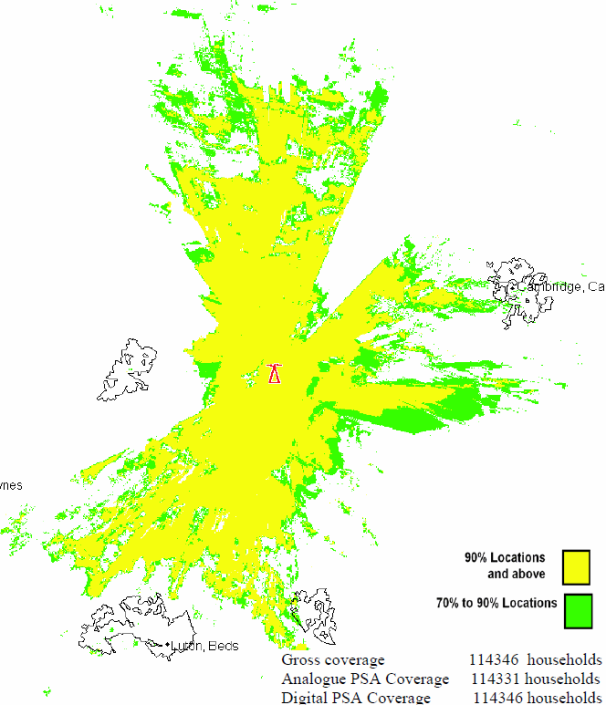
Mendip
Sudbury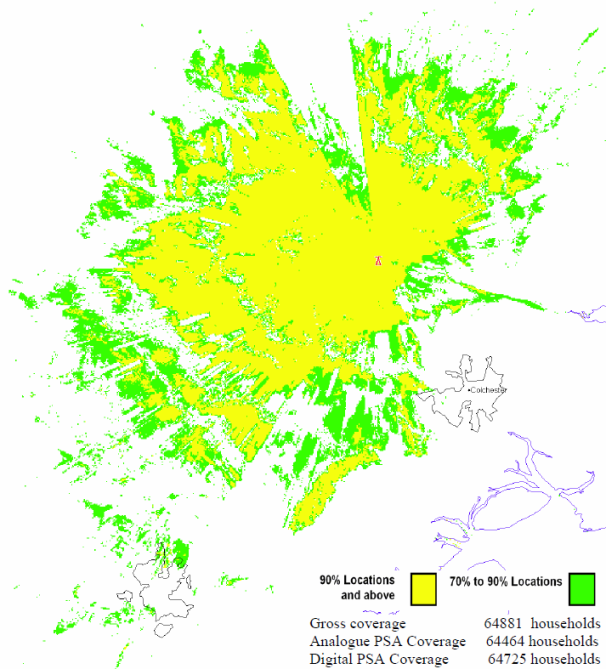
Oxford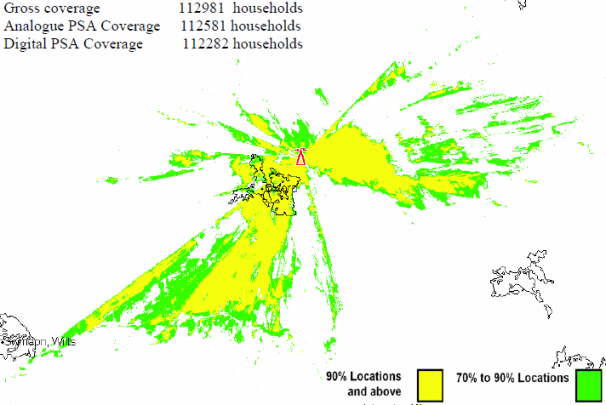
The Wrekin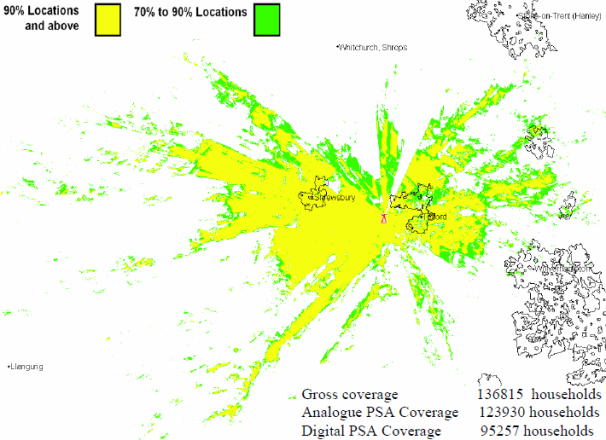
Dover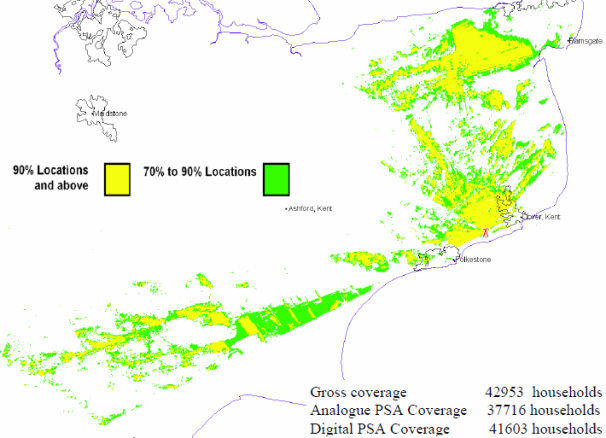
Ridge Hill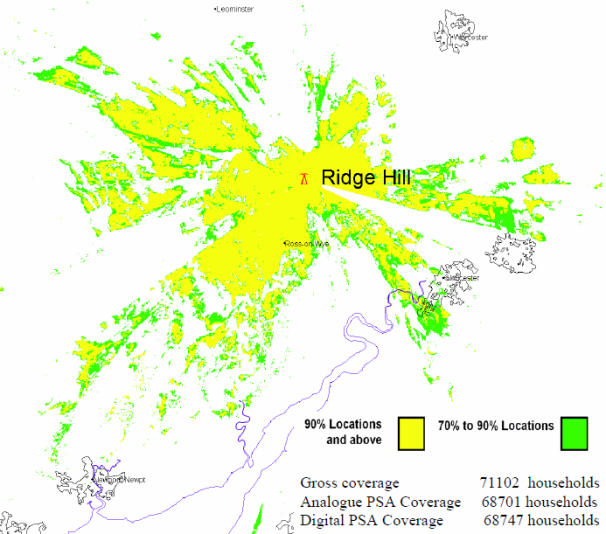
Caldbeck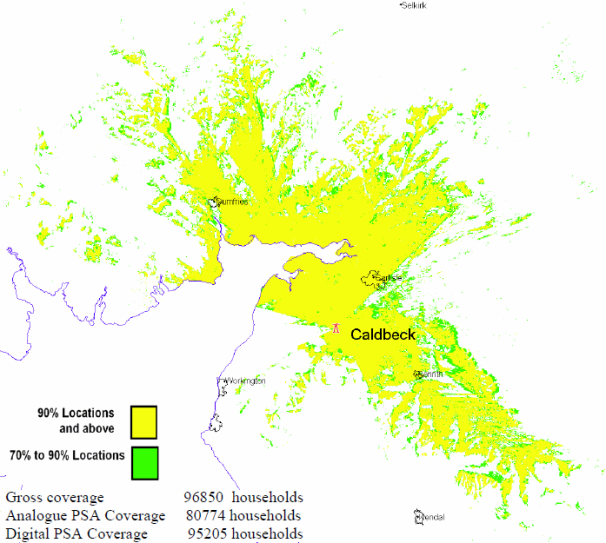
Durris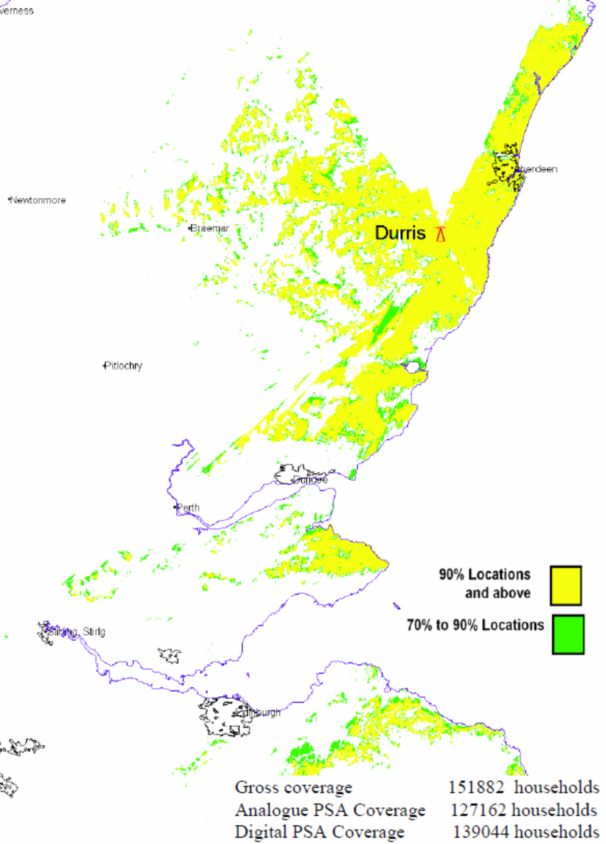
Angus
Limavady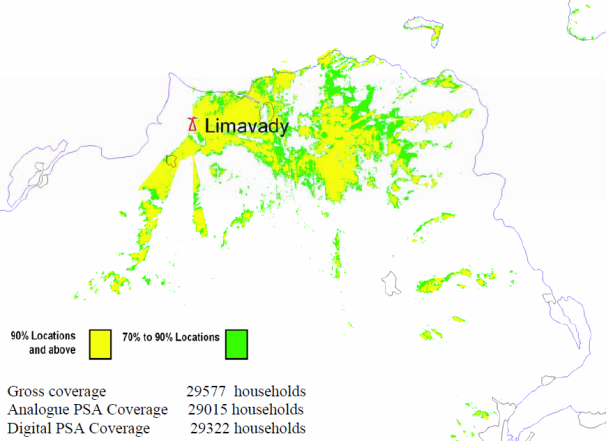
Knockmore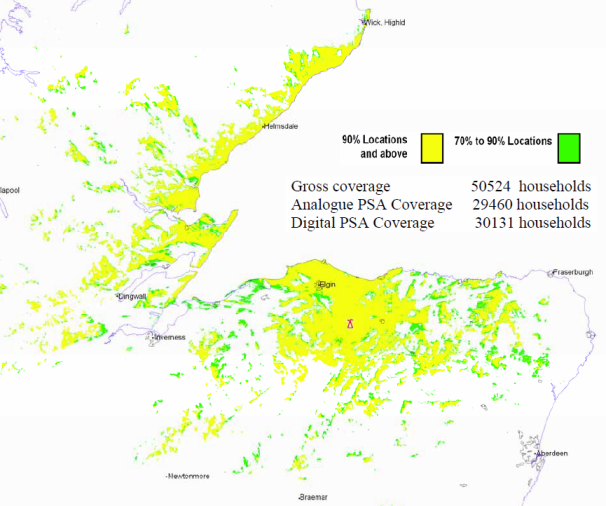
Rosemarkie
Hemel Hempstead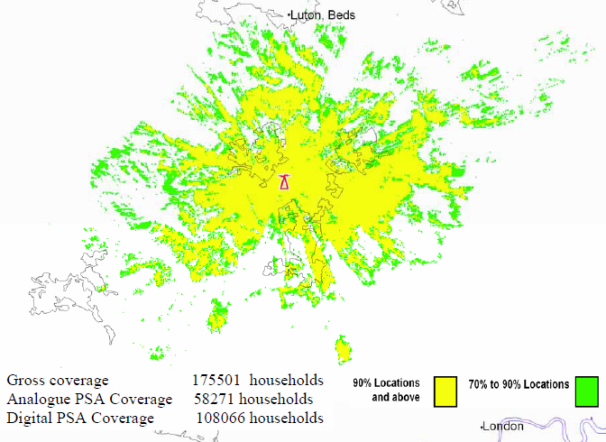
Brierley Hill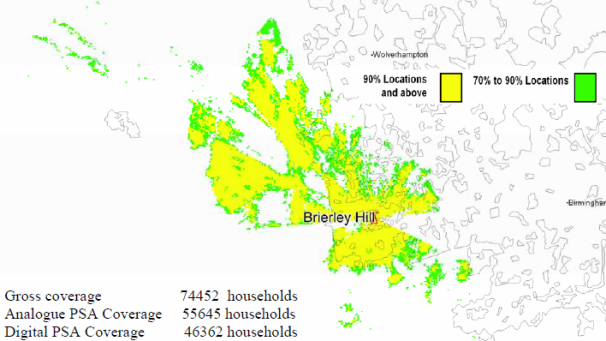
Bromsgrove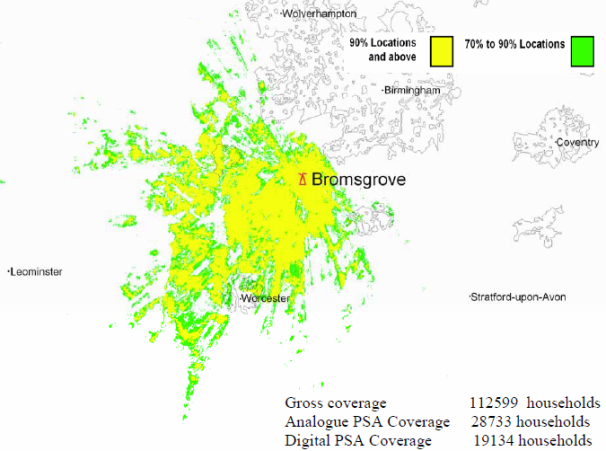
Kidderminster
Storeton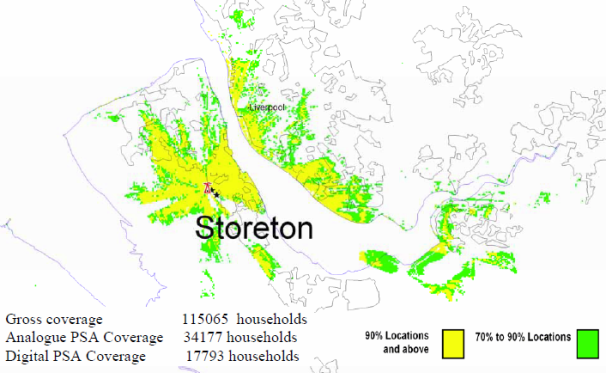
Sheffield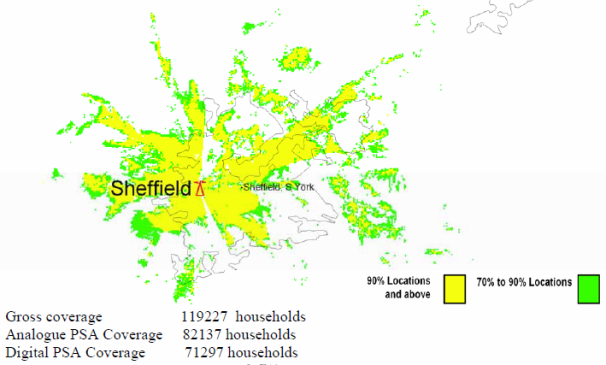
Guildford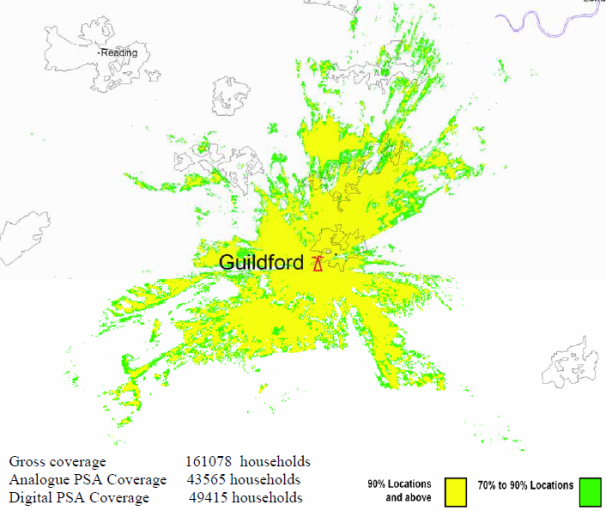
Reigate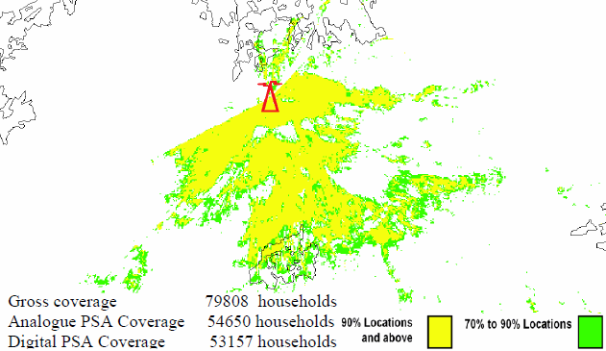
Tunbridge Wells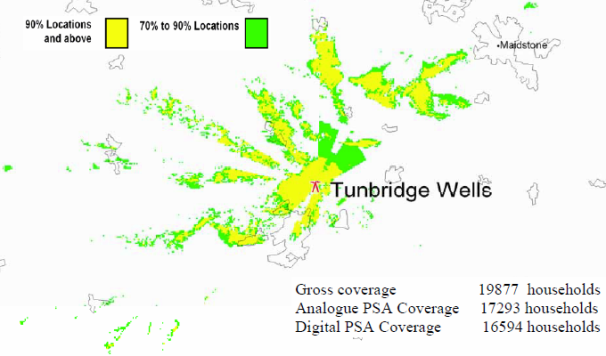
Malvern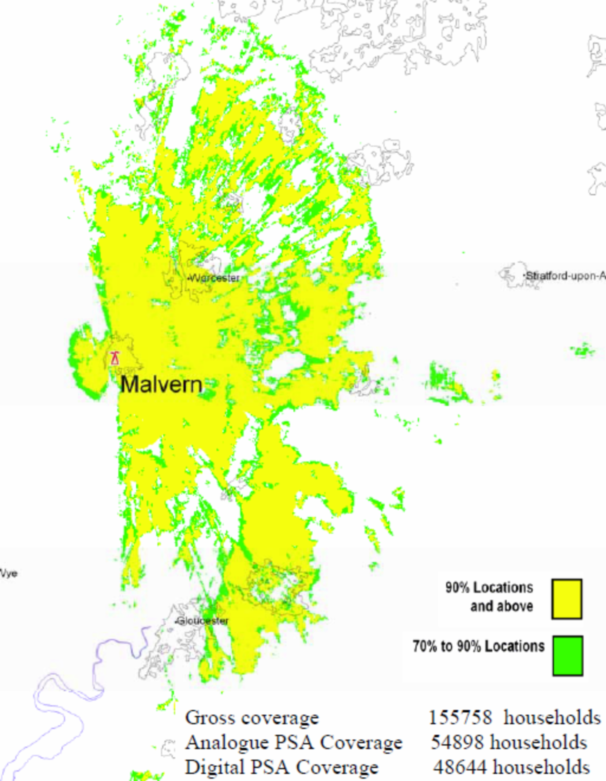
Lark Stoke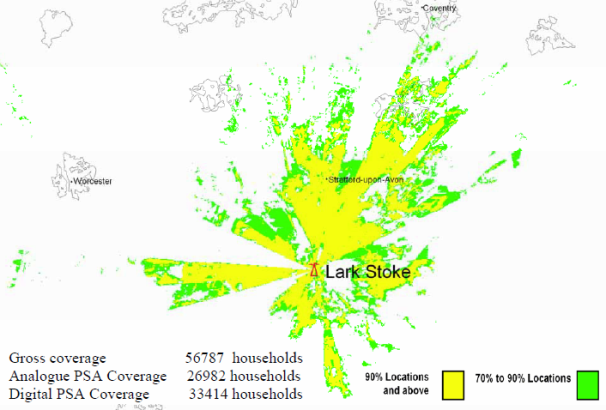
Fenton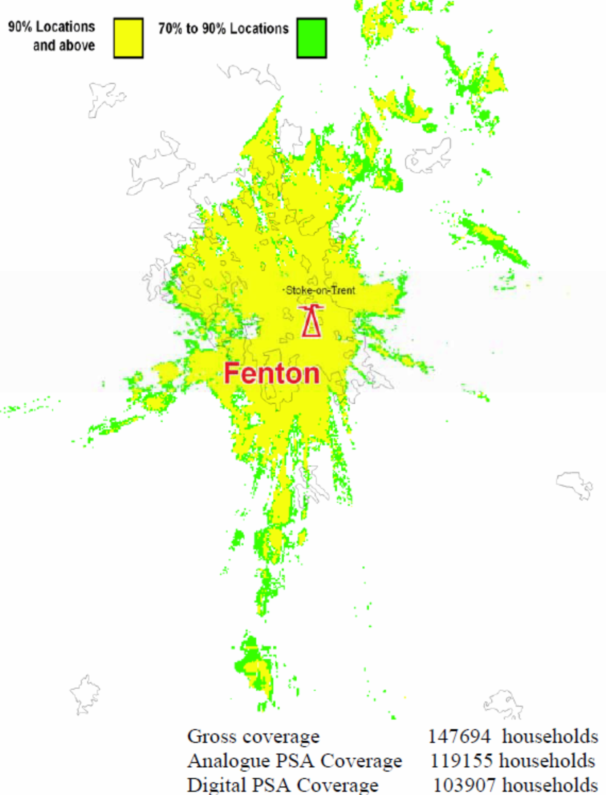
Pendle Forest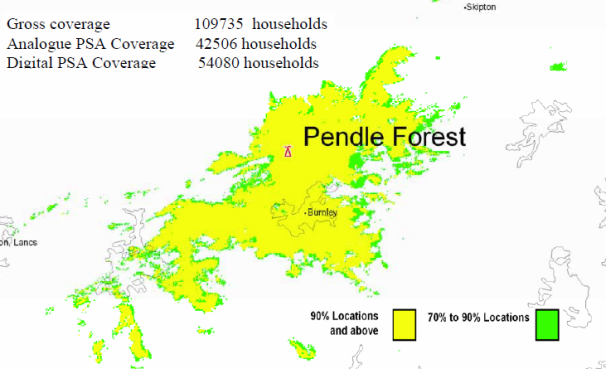
Saddleworth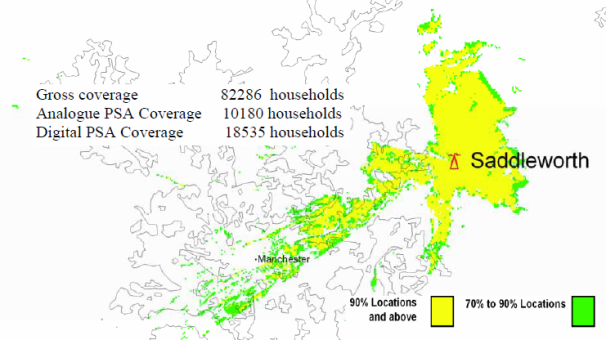
Lancaster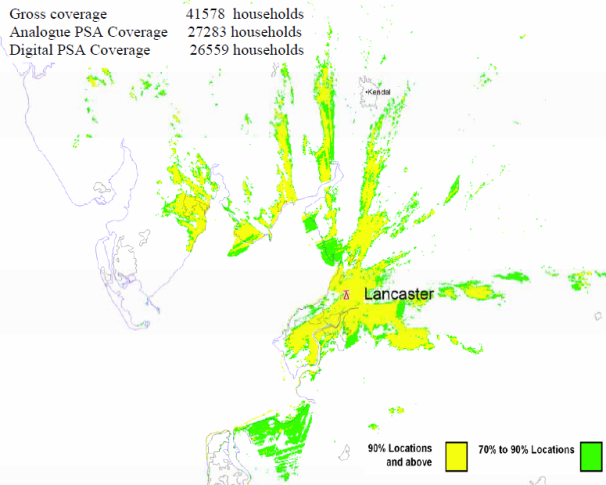
Keighley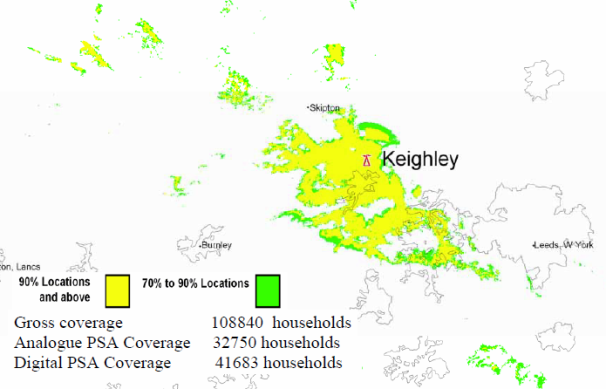
Kilvey Hill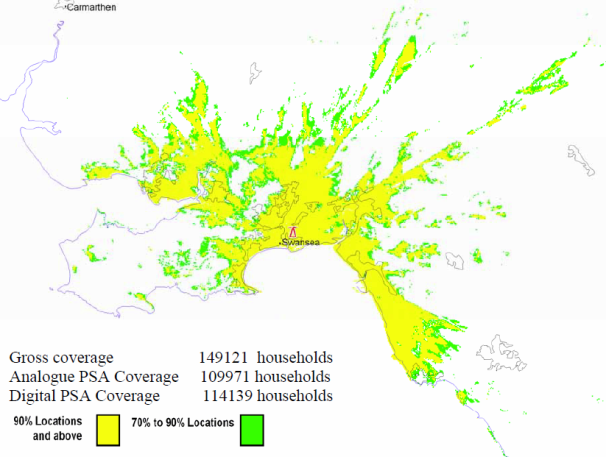
Salisbury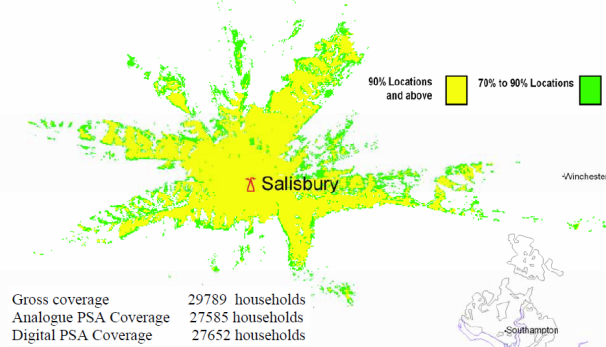
Poole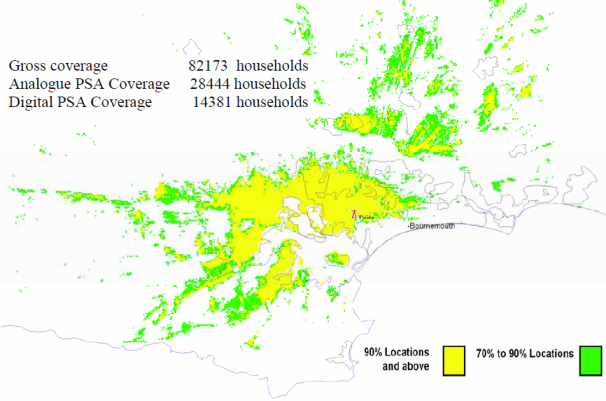
Whitehawk Hill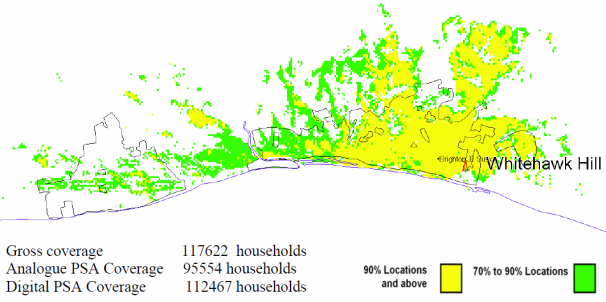
Fenham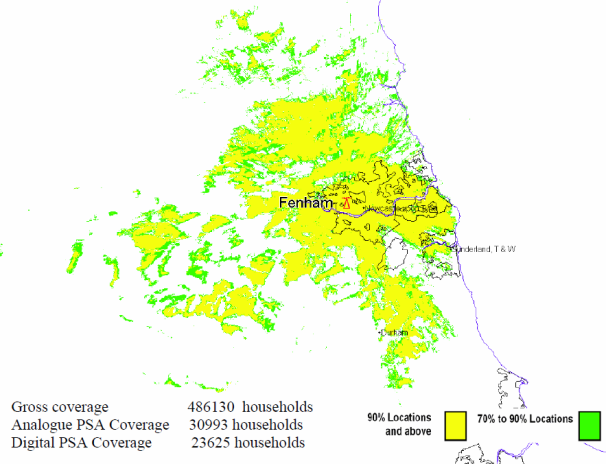
Bristol Kings Weston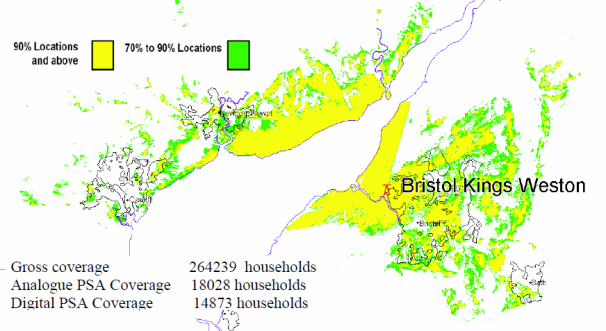
Bristol Ilchester Crescent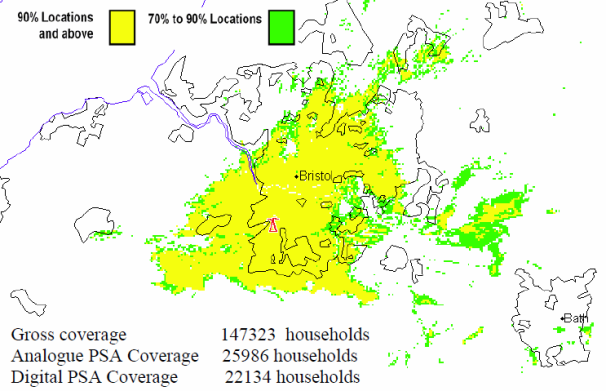
Nottingham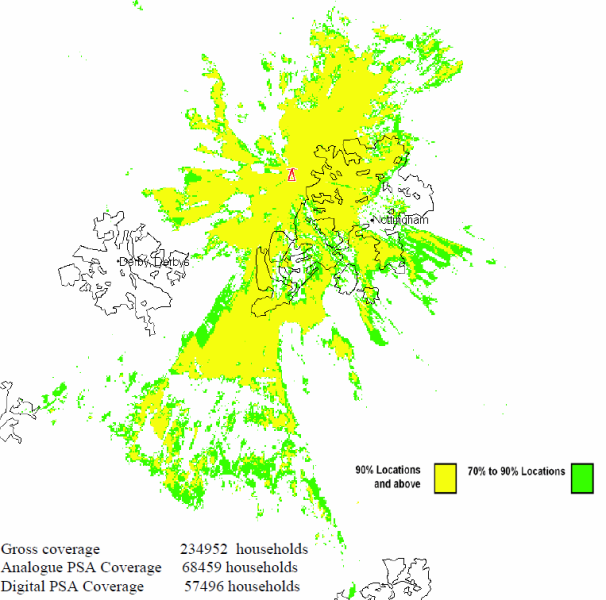
Llanddona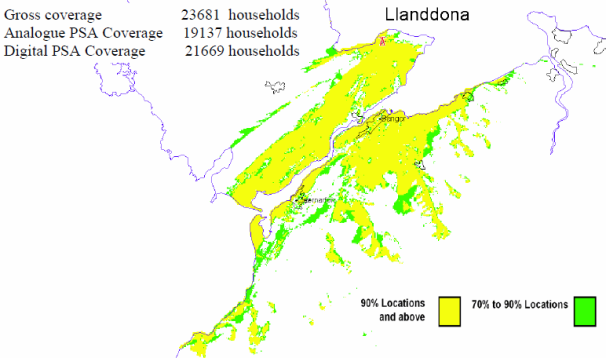
Carmel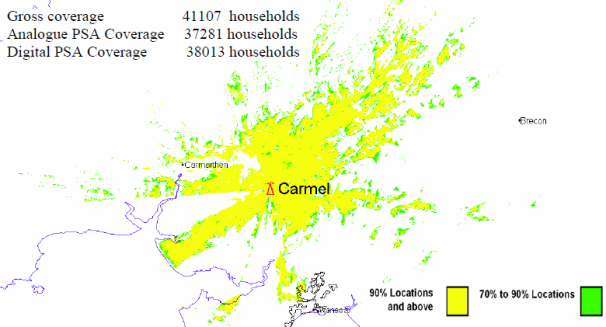
Olivers Mount
Luton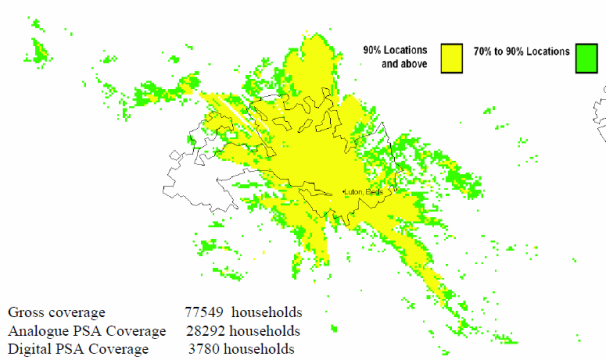
Midhurst
Preseli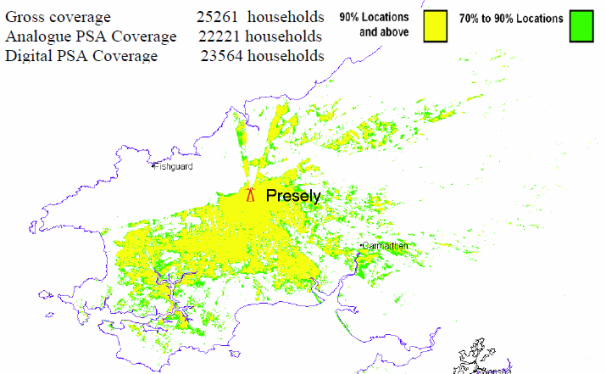
Caradon Hill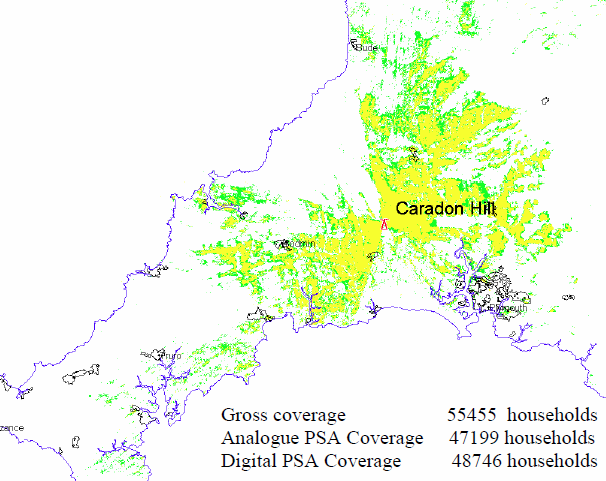
Plympton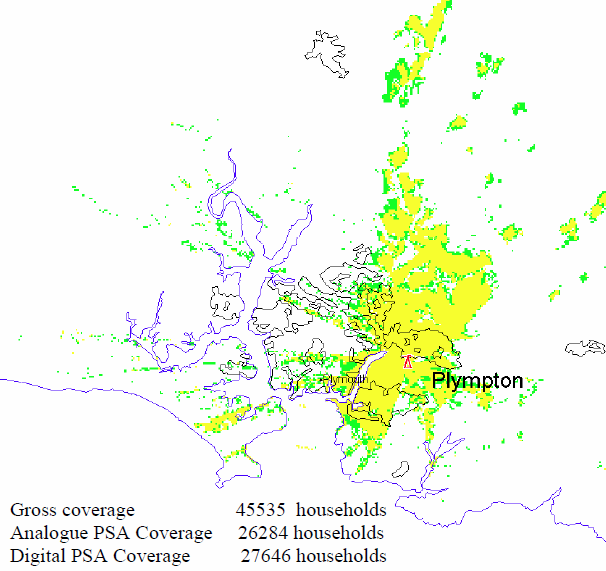
Stockland Hill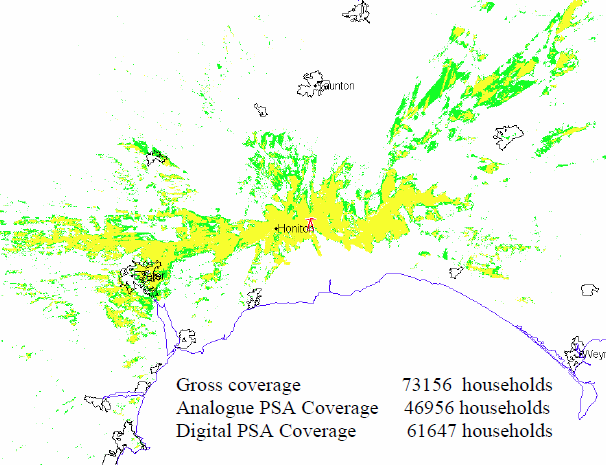
Beacon Hill![]()
Huntshaw Cross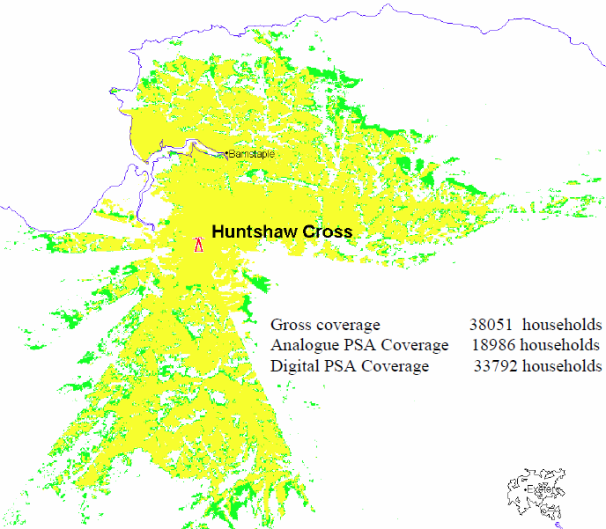
Redruth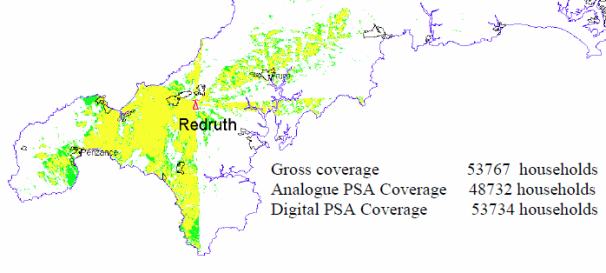
Moel Y Parc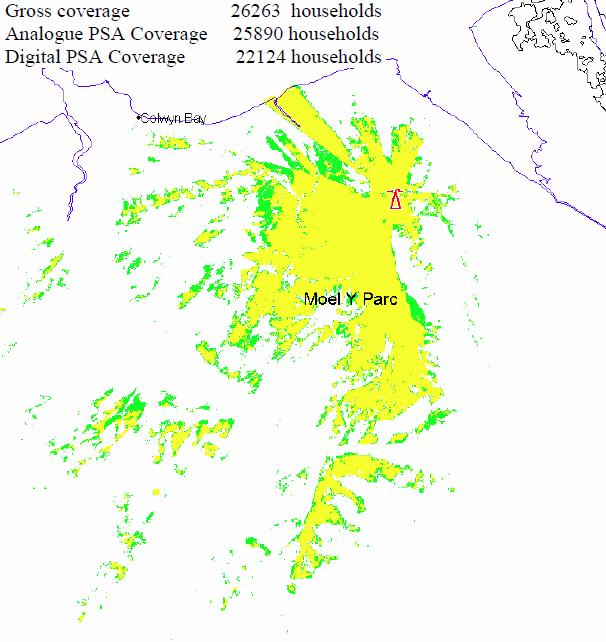
Brougher Mountain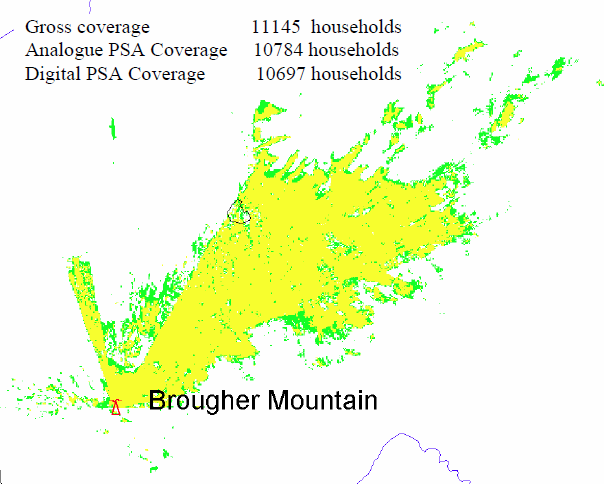
Darvel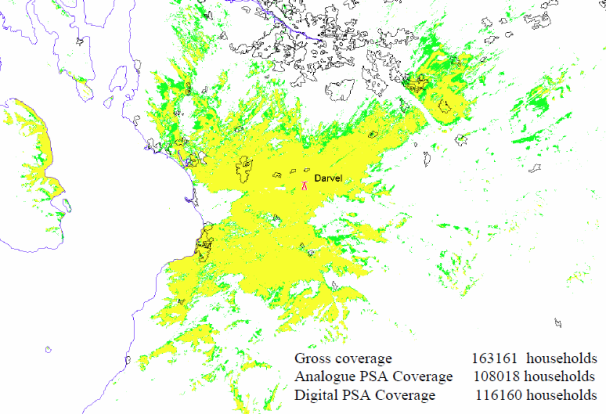
Rosneath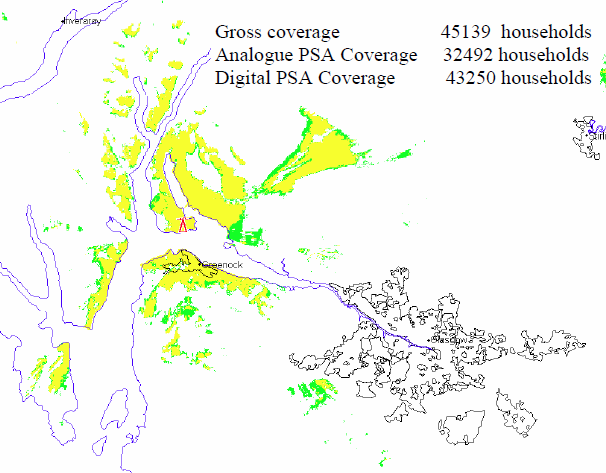
Bluebell Hill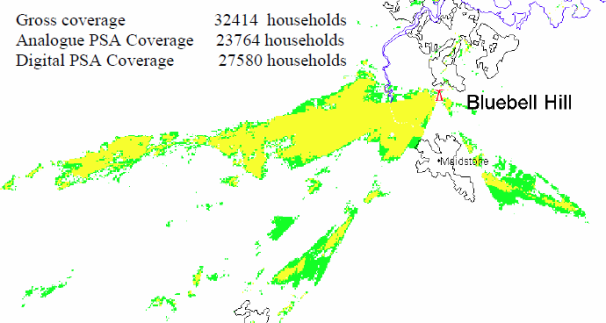
Londonderry
Heathfield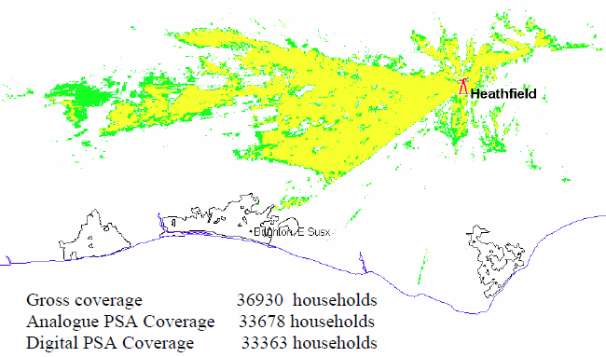
Selkirk
Bressay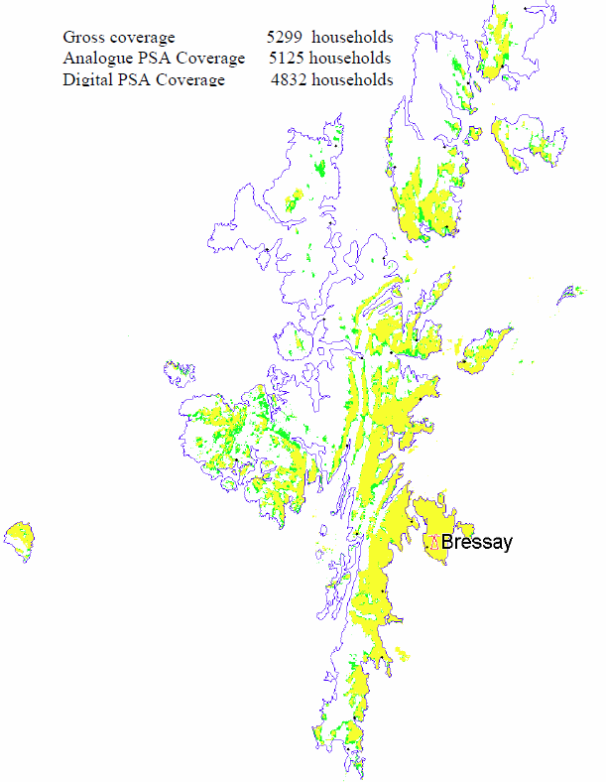
Torosay
Perth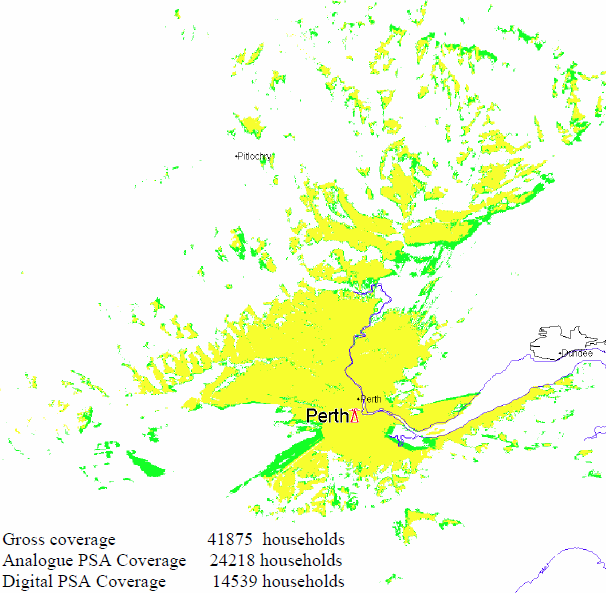
Tay Bridge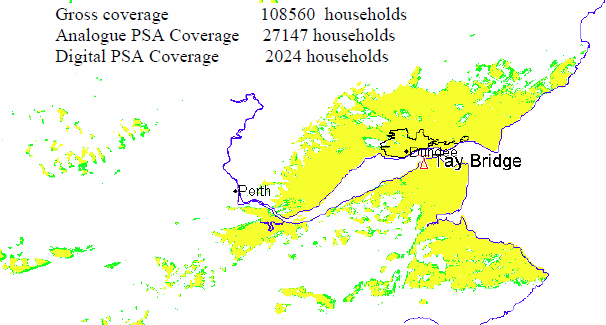
Keelylang Hill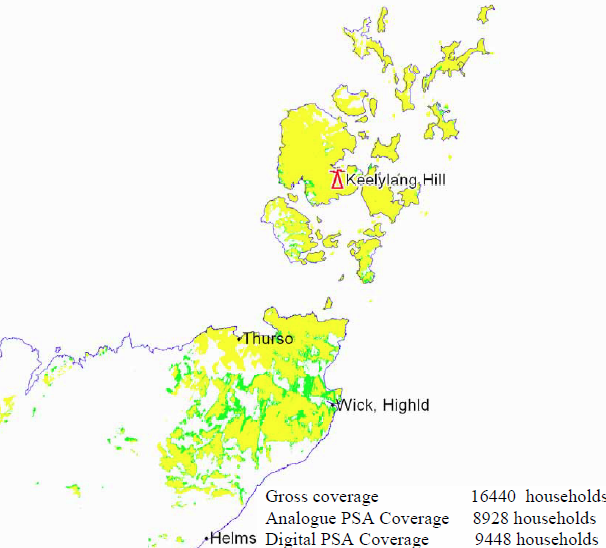
Rumster Forest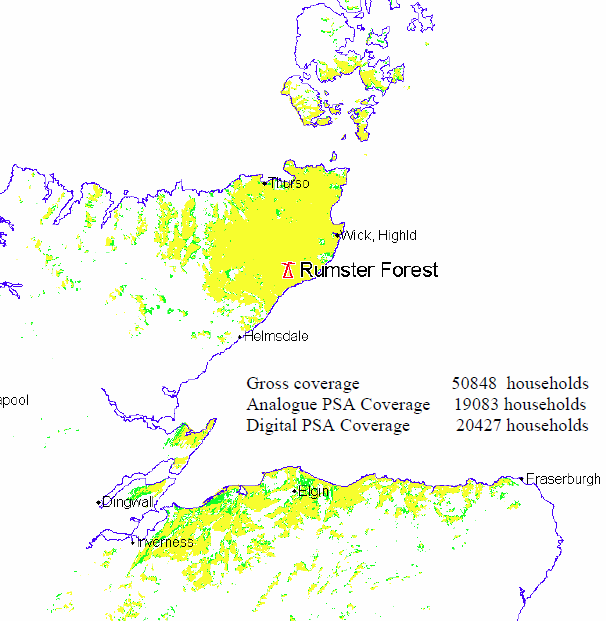
Eitshal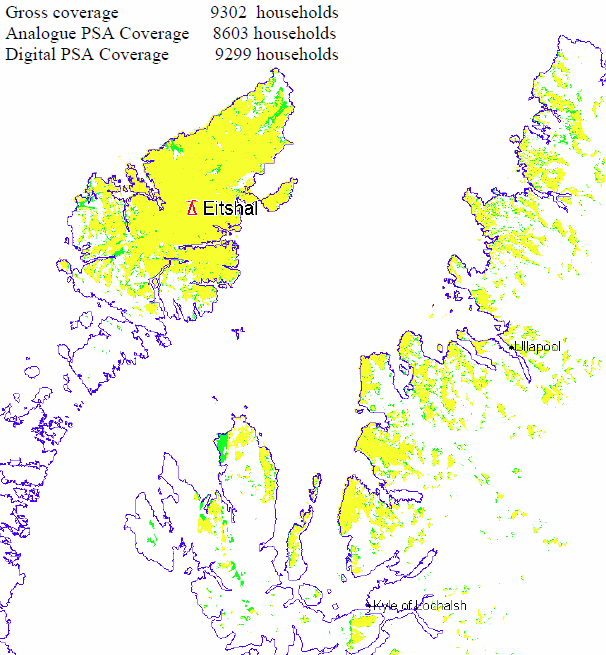
Balgownie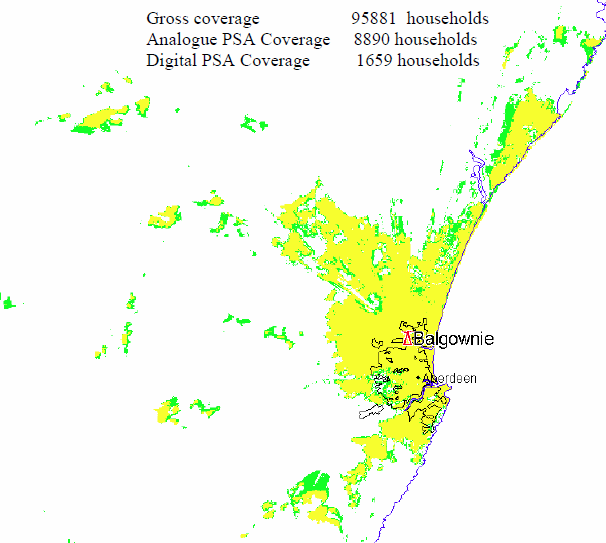
12:01 PM
thanks for prompt reply.
i'm trying to pre-config Kaffeine Player in PCLinuxOS - for the two muxes that have too weak a signal here to locate automatically.
They're Hauppage cards that get an initial config file from Germany - but its not fully up to date.
I'll keep trying and maybe install XBMC or MythTV.
Still curious to where that ID info could be found.
| link to this comment |
bob davies: The configuration is in the NIT - the Network Information Table - part of the DVB-T broadcast, your software should be able to read this configuration and use it.
| link to this comment |
11:13 PM
thanks again.
will try to locate + view the file where NIT info is held.
hope this was the correct page to post my question.
| link to this comment |
bob davies: The NIT is part of the standard DVB-T broadcast, it is how ALL receivers discover the available channels.
| link to this comment |